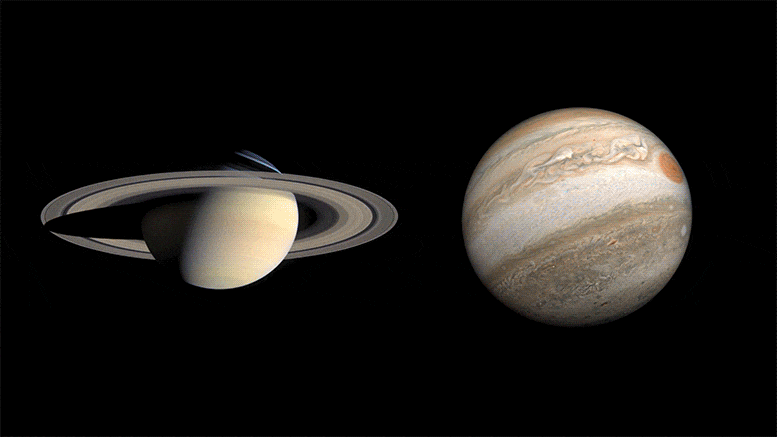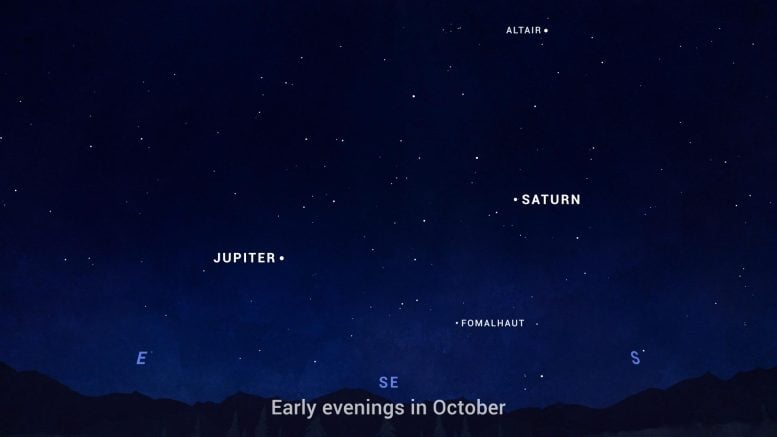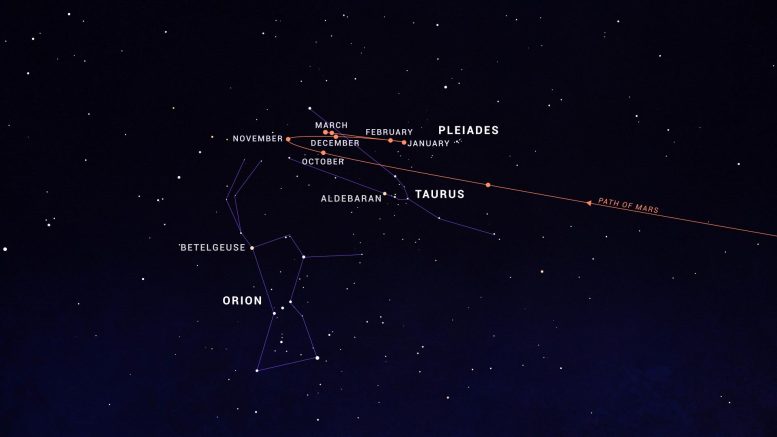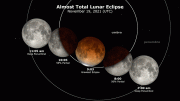
What’s Up Skywatching Highlights for October 2022? Evenings with giants, Mars changes course, and meteors from Orion.
What are some skywatching highlights in October 2022?
Enjoy giant planets Jupiter and Saturn all night throughout the month. Then watch as Mars begins its retrograde motion, moving westward each night instead of eastward, for the next few months. Finally, check out the Orionid meteors overnight on October 20.
What’s Up for October? Evenings with giants, Mars changes course, and meteors from Orion.
Giant planets Jupiter and Saturn are visible throughout the night in October. Early in the evening, you’ll find them to the southeast, moving slowly westward with the stars over the course of the night. They form a triangle with the bright star Fomalhaut.
When observing this trio, note how the planets shine with a steady light, while the star twinkles. This can be an easy way to know if what you’re looking at is a planet or a star.

Sky chart showing Jupiter and Saturn early in the evening in October. The planets form a triangle with bright star Fomalhaut. Credit: NASA/JPL-Caltech
Mars has been steadily working its way toward the east all year like it usually does, relative to the background stars. But at the end of October, Mars halts this apparent motion, and then appears to reverse course. Over the next three months, from November to late January, Mars moves toward the west each night. Then near the end of January, it reverses direction again, and continues its eastward journey.
This is what’s called the retrograde motion of Mars. It happens about every two years, and it really threw early observers for a loop. That Mars appears to change its direction is an illusion caused by the motions of our planet in its orbit passing by the Red Planet in its orbit.

Sky chart showing the path of Mars over several months in 2022 and 2023, as it enters, then exits, retrograde motion. Mars appears to change its direction of motion on the sky because Earth is passing the slower-moving Red Planet in its orbit. Credit: NASA/JPL-Caltech
See, Earth and Mars are on these roughly circular paths around the Sun, like cars on a racetrack, and Earth is on the inner, faster track. About every 26 months, we overtake Mars, which is moving slower in its orbit. During that period when we’re passing Mars, and before we round the bend in our orbit to pull away from it, we see Mars in retrograde, appearing to change direction, even though it’s still moving forward in its orbit.
So take note of Mars over the next few months, as it appears to reverse course. Note how its position changes with respect to Betelgeuse, Aldebaran, and the Pleiades over the weeks, and you’ll be witnessing what was once a source of intense curiosity for astronomers, but which we now know is just a sign of two planets passing in the night.
The Orionid meteor shower is active throughout October and November, and peaks on the night of October 20. It’s a moderate shower, usually producing 10-20 meteors per hour at its peak, under clear, dark skies. This year, the Moon will be about 20% full on the peak nights. So it will interfere a bit when it rises a couple of hours before dawn, but shouldn’t totally spoil the viewing.
The shower’s name comes from the fact that you can trace the paths of its meteors back to an area on the sky near Orion. These meteors are fragments of dust left behind by Comet Halley in a trail that extends along its orbit. They tend to be bright and fast-moving, and they often leave persistent trails that can glow in the sky for a few seconds after they streak by.
No special equipment is needed to observe meteor showers. Just make sure you’re warm enough, and viewing from a safe, dark spot away from bright lights. Then all you have to do is look up and enjoy the show.









Be the first to comment on "Don’t Miss: Evenings With Giants, Mars Changes Course, and Meteors From Orion"